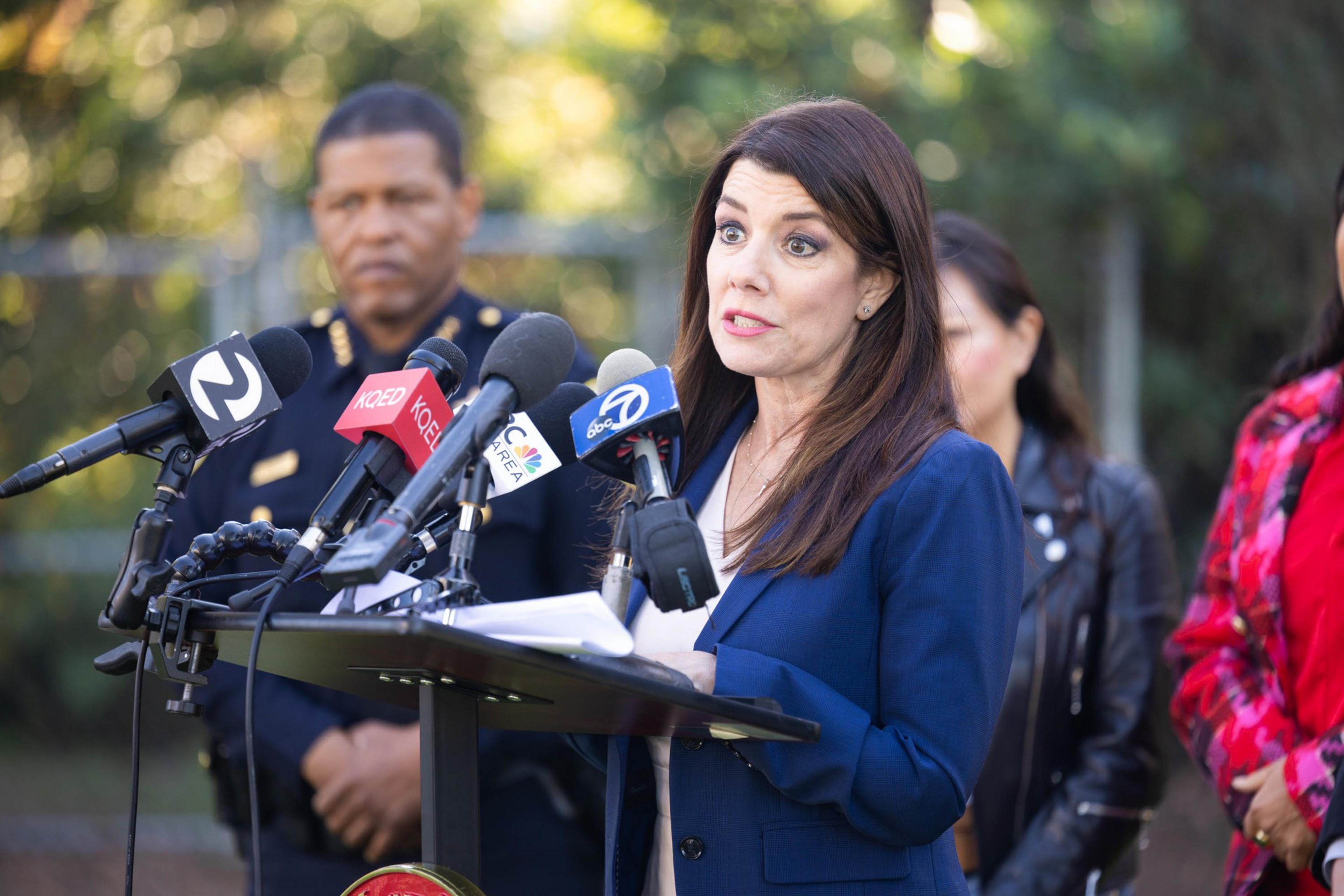Keep an eye out for tinted license plate covers, and you’ll start seeing them on cars everywhere — unless California lawmakers put a stop to them.
The gadgets, which include electronic shields that move up and down at the click of a button, help scofflaw motorists avoid toll booth charges and evade police. State agencies say the covers are costing California millions of dollars in revenue per year and emboldening criminals.
San Francisco Assemblymember Catherine Stefani will introduce a bill this month imposing steep penalties on those who sell and manufacture the covers, including online retailers like Amazon, where they go for anywhere from $50 to $200.

“These devices have become a tool for lawbreakers,” Stefani said in a statement. “This bill ensures that enforcement can keep pace with technology designed to deceive.”
AB 1085 would impose a fine of $10,000 for each cover sold. Stefani, who formerly represented the Marina District on San Francisco’s Board of Supervisors, says the law would close a loophole, since it is already illegal to obscure a license plate. State patrol officers handed out 1,300 citations to drivers for covering their plates in 2024, according to Stefani.
Transportation safety advocates applauded the measure.
“Manufacturers of license plate obstruction devices put our communities at risk by enabling reckless behavior that undermines our ability to hold dangerous drivers accountable,” Marc Vukcevich, director of state policy at Streets For All, said in a statement. “By increasing penalties for those who manufacture these devices, we are taking an important step toward protecting pedestrians, cyclists, and drivers alike, ensuring safer streets for everyone.”

According to the Bay Area Toll Authority, the regional agency that collects road fees, the state lost $1.4 million during the most recent fiscal year from obscured license plates on cars making 185,000 crossings at seven local bridges.
But the real cost is likely much higher, since that doesn’t account for lost tolls at the Golden Gate Bridge, which sees about 16 million crossings each year. Drivers are charged between $9.25 and $10.25 for taking the bridge into the city. The figures also don’t include lost fees for use of express lanes in Northern and Southern California.
Both eBay and Walmart told the Standard they don’t allow the sale of license plate covers.
“We have controls in place to prevent the purchase of items designed to obscure license plates in California,” A Walmart spokesperson said. “Our team regularly updates controls to comply with changes in regulations.”
Other retailers, including Amazon and Etsy, did not respond to a request for comment.
The plate covers may also have an impact on San Francisco’s initiative to stop speeding, according to the city attorney’s office (opens in new tab). This year, cameras installed across the city started snapping photos of license plates on speeding vehicles. It’s unclear how many the city has been unable to identify due to license plate covers. A spokesperson for the San Francisco Municipal Transportation Agency declined to comment, saying the program is still in the early stages of rollout.
City officials note that the covers have been discovered on vehicles associated with sideshows, robberies, and thefts.
Stefani’s law would expand on a local effort by City Attorney David Chiu, whose office sent cease and desist letters to four online retailers — Amazon, Etsy, Walmart, and eBay — in 2023 demanding that they curb the sale of the products. The online retailers told The Standard at the time that they were working to take down illegal vehicle merchandise.
In 2022, New York City announced a joint effort (opens in new tab) with Amazon to restrict the sale of tinted license plate covers to those with a New York state address.
